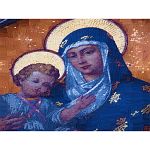We crossed the only bridge in Belgrade over the Danube River – the old metal, heavy thing built in 1935. Once on the other side of Belgrade we continued towards Pancevo city, well known for its accident-prone factories which sometimes pollute the whole of Belgrade. As it was Sunday, the day for the local antiques market, we couldn’t resist stopping for a quick browse for a “good deal”. We didn’t get anything except an old CD for 50p which worked until song number four. Regardless, we considered it a good deal.
Crossing the Danube River means entering the flat Pannonia Plain where you orientate yourself only by the next tree or lonely house. Considering that the official alphabet in Serbia is Cyrillic and that road signs are rare then that tree or house takes on more importance during your journey. Nature at this time of year (May 2012) generously painted everything in a lush green cloaking the trees and houses from sight. Everything looked the same especially for four city girls.
Confused and tired by the oppressive heat we decided to stop along the way at Salas, called Sekin Salas which means Sisters Ranch. If you want to experience the real Serbia you should try to stay at one of the many ranches which offer a combination of rural Serbia with good food, clean air and lots of activities – horse riding, fishing, cooking classes…embroidery classes…During our hour stop we managed to meet the loveable Rasha, a ginger corgi who we considered stealing away, but after realising that Rasha has friends on the Ranch – three cats, two goats, a pheasant, an over-protective chicken with eight yellow chicks and two more dogs lazily asleep in the front garden – we decided that Rasha had a better life than we did, so we left him in his natural surroundings.
The Museum of Naive Folk Art is situated
Outside the Museum there is a courtyard with three galleries, in one of them





